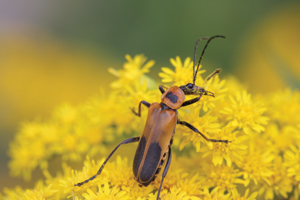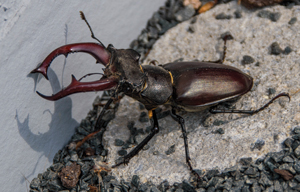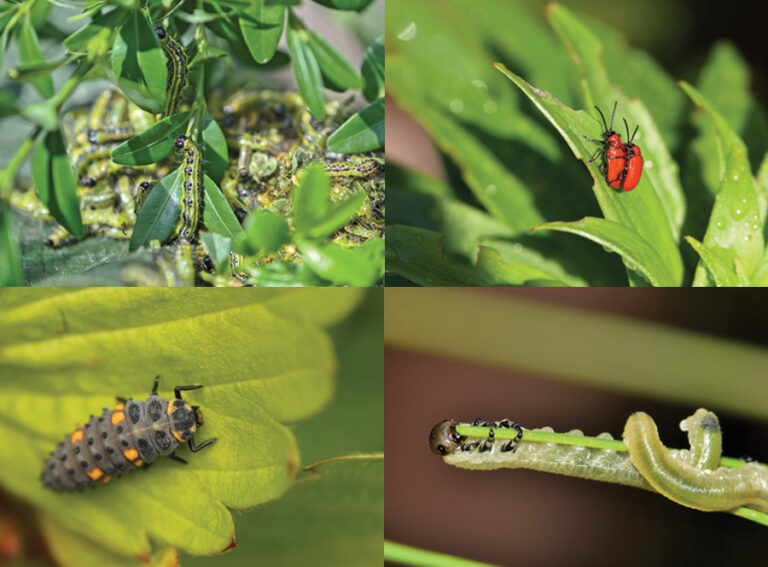Hello bug, who are you?
It’s vital not to regard every invertebrate you notice in, around or on your plants as an evil, sap-sucking, leaf-munching foe that is on a mission to destroy your lovingly purchased, planted and nurtured stock in your garden. But how do you decide whether the insect you have found is a pest or a welcome guest? Please don’t assume they are out to sabotage your plot – every one of them is innocent until proven to be guilty! We need to encourage all sorts of wildlife into the garden, as biodiversity is key to a balance of life. A garden is an ecosystem that needs protection.
A very simple test for insects that don’t fly could help you decide if they might be friend or foe: if it moves quickly, it is more likely to be a beneficial predator, while if it is slow-moving, it could be a plant-eating nuisance. Before deciding to despatch the latter, you have time to do some research. You could capture the culprit in a jar before making a decision.
Common pests
Try to remove vine weevils, lily beetles and box tree moths before they have a chance to lay eggs. Numbers of these pests have proliferated over the past decade. Box caterpillars are destroying many of our native box plants (Buxus sempervirens), which are popular for garden and landscape use as well as occurring in the wild, including at Box Hill in Surrey, around the North Downs, the Cotswolds and the Chilterns. Use biological controls, where available, and pick off vine weevils and lily beetles by hand.
Aphids are not a huge problem, even though they might affect plant growth. The best way to tackle them is to use your garden friends! Ladybirds, lacewing, hoverflies and birds make excellent aphid eaters, and nurturing your garden ecosystem will encourage these beneficial creatures. You can also wash aphids off using a weak solution of washing up liquid.
Cabbage moth caterpillars are probably the most common problem in the allotment, and netting susceptible plants is the most efficient way to prevent damage to brassica plants. But, once again, a healthy ecosystem to encourage natural predators will help with the control. Planting marigolds as companions nearby also helps to repel them.
Sawflies belong to a large group of insects related to bees and wasps. Their caterpillar-like small larvae feast on leaves of plants such as willow, gooseberry, rose, Solomon’s seal, geranium and even on the young fruit of apples. They can defoliate plants relatively quickly, but they are a nuisance rather than a serious threat. Picking them off by hand is probably the best way to deal with them, together with attracting natural predators to help control numbers.
 Soldier beetles can be red, brown, yellow or black and are distinctive because of their slim, elongated, soft body. These are a gardener’s friends! They feed on aphids, red spider mites and caterpillars.
Soldier beetles can be red, brown, yellow or black and are distinctive because of their slim, elongated, soft body. These are a gardener’s friends! They feed on aphids, red spider mites and caterpillars.
There are more than 35 species of tiny pollen beetle in the UK, and these develop and live in the flower buds of many different plants. They are small, dark beetles with a metallic sheen and they do no harm. They eat pollen and might also help with pollination.
Ground-dwelling beetles and beetles known as rove beetles are friends! If you find any of these dark beetles hiding under leaf litter or rocks during the daytime, leave them be. They feed on smaller insects, garden pests such as aphids, fly eggs and various larvae.
 If you are lucky enough to see Britain’s largest beetle, the stag beetle, consider yourself very lucky. Their larvae develop in warm, sun-drenched dead wood and spend several years feeding on dead wood before completing the metamorphosis into a glorious beetle. The adult lives only a few weeks, being crepuscular, which means they are most active in twilight.
If you are lucky enough to see Britain’s largest beetle, the stag beetle, consider yourself very lucky. Their larvae develop in warm, sun-drenched dead wood and spend several years feeding on dead wood before completing the metamorphosis into a glorious beetle. The adult lives only a few weeks, being crepuscular, which means they are most active in twilight.
Notifiable pests
Some plant pests are serious – the Colorado Potato Beetle, for example, should be notified to the Animal and Plant Health Agency (APHA). In 2023 there was an outbreak of this beetle in Kent. It was found in a crop of potatoes but other host species include tomato plants, aubergines, peppers, cabbages, wild carrots and lettuce. The adult beetle has ten black stripes on its yellow-orange body.
Oak processionary moth (OPM) is a notifiable pest, posing a serious threat to trees within the Quercus family (oak) in the UK. It is also hazardous to humans and their pets.


